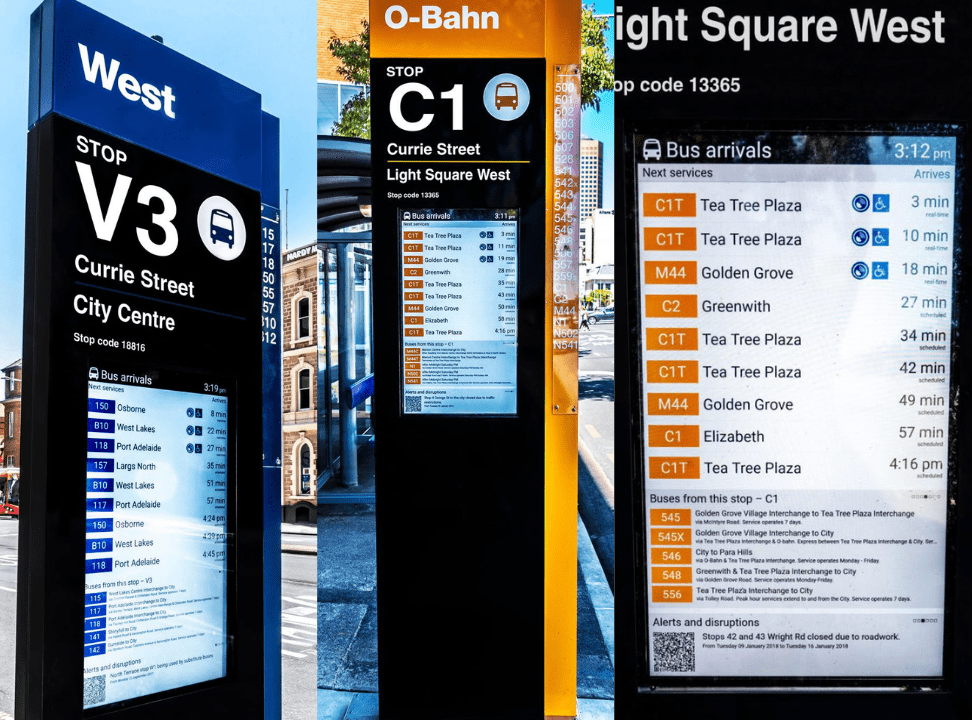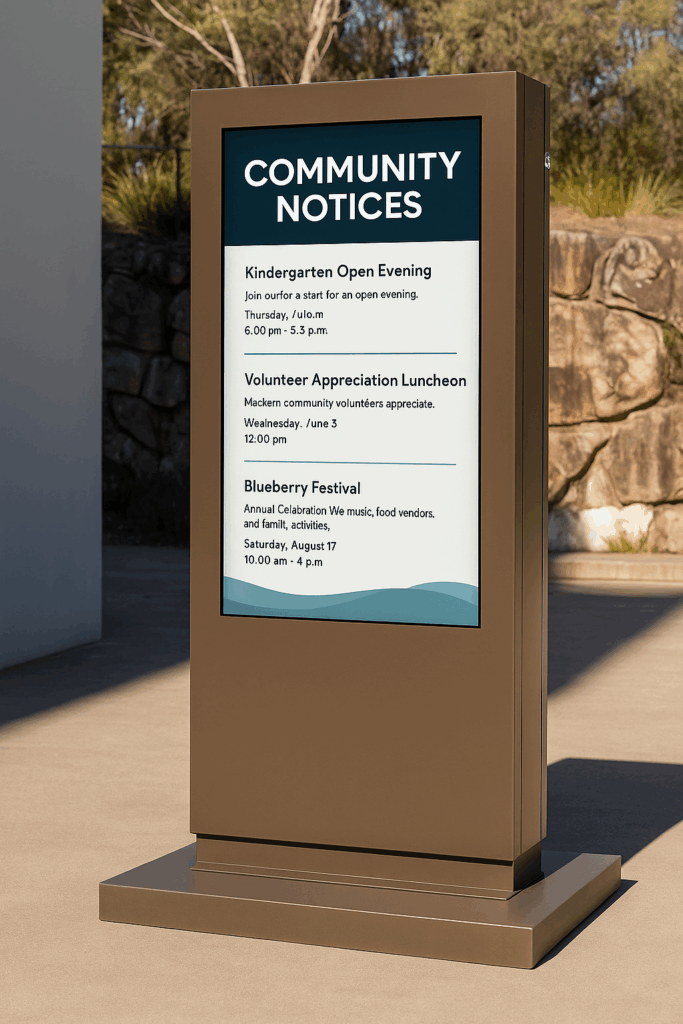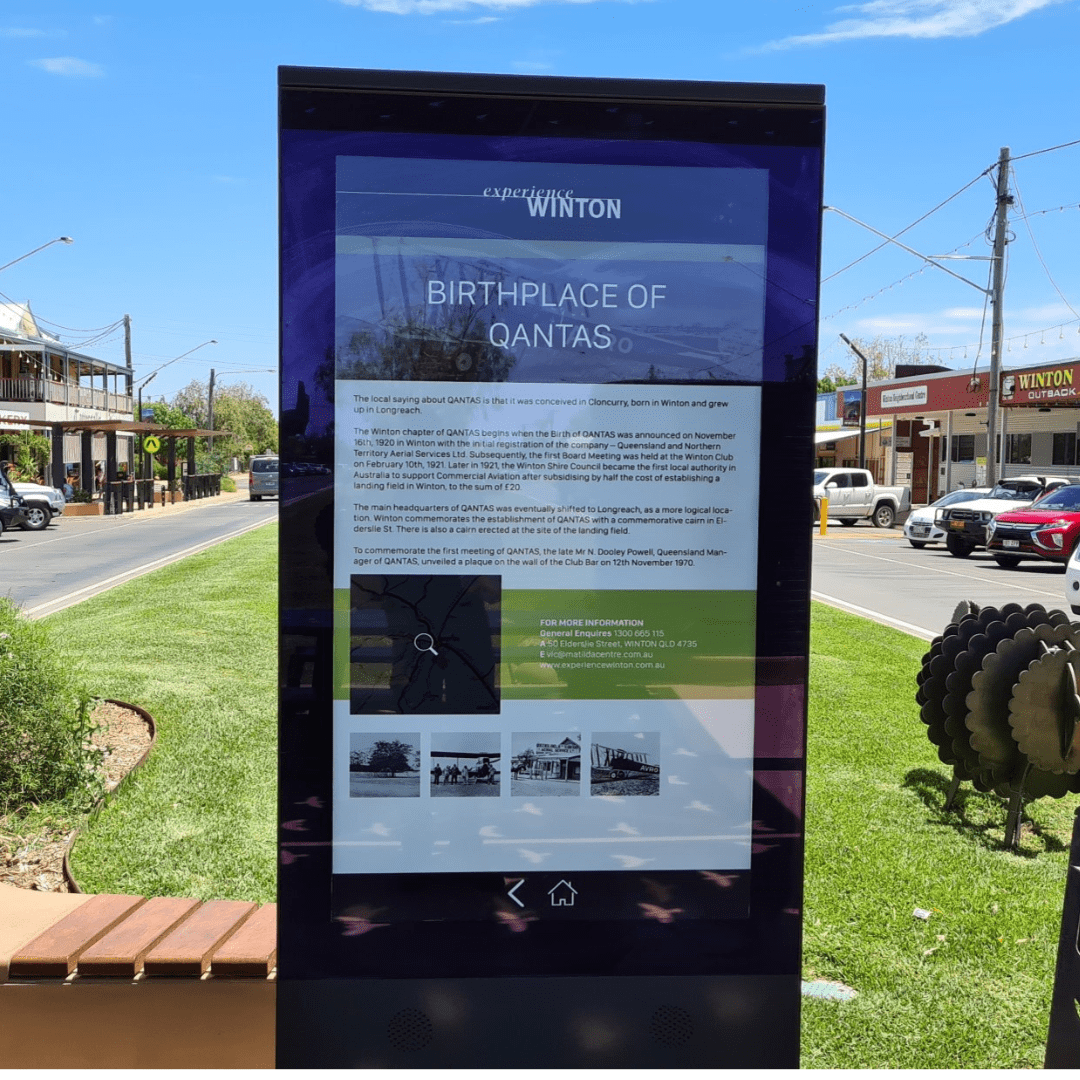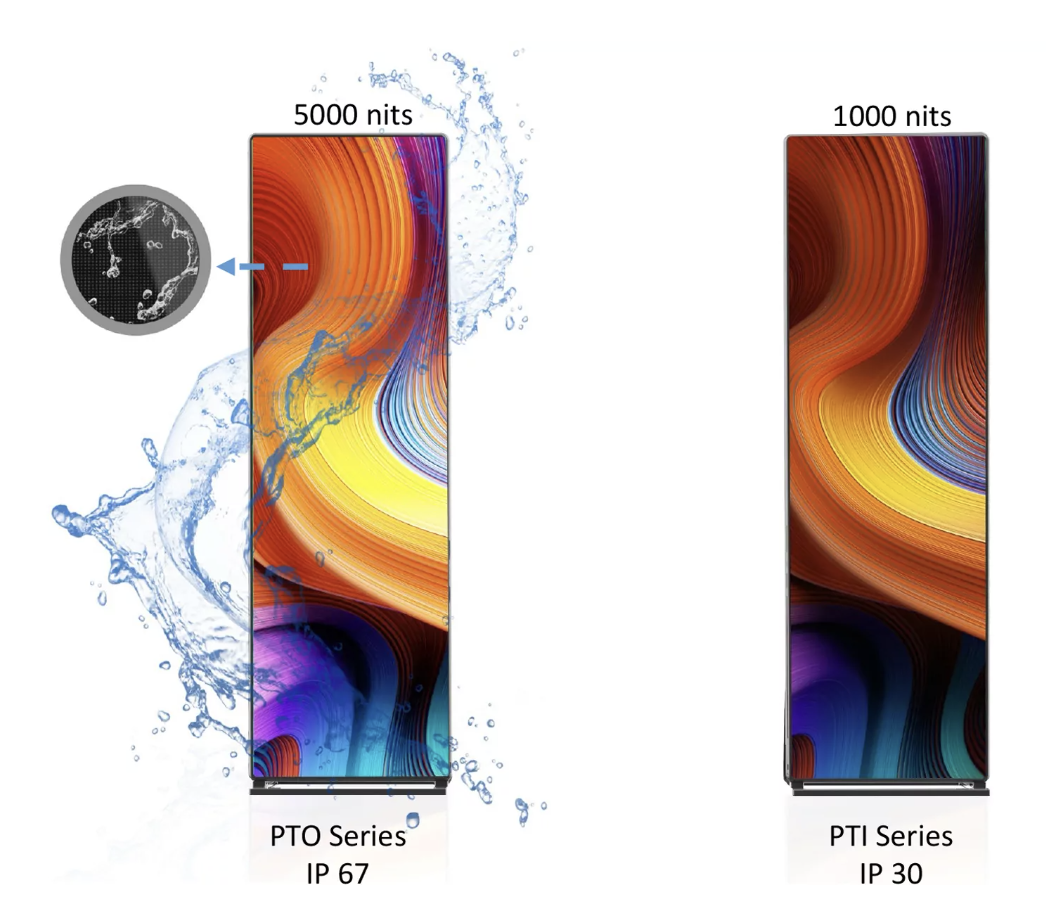In today’s fast‑paced world, passengers expect clear, up‑to‑the‑minute information when navigating transport hubs. Whether it’s a bustling train station, a busy bus interchange, or an airport terminal, efficient wayfinding is essential for keeping people moving and reducing frustration.
Outdoor digital kiosks have become a game‑changer for wayfinding in transport hubs. By combining real‑time data, interactive features, and durable, weatherproof design, these kiosks help passengers reach their destinations faster and more confidently.
Here’s how they’re transforming the passenger experience across Australia and New Zealand.

1. Using Transport Hub Kiosks to Provide Real‑Time, Accurate Travel Information
Unlike static signage, outdoor digital kiosks deliver live updates on:
Bus, train, and ferry arrival times
Platform and gate changes
Service disruptions or delays
Alternative route suggestions
For example, in a bus interchange, a kiosk can instantly notify passengers of a diverted route due to road closures — helping them plan without guesswork.
Why it matters: Real‑time updates reduce passenger stress and help them make faster travel decisions.
2. Interactive Wayfinding & Route Planning
Outdoor kiosks can feature touchscreen maps that allow passengers to:
Search for destinations or routes
View walking paths within large stations
Access multimodal transport options (bus → train → ferry)
Some systems even integrate with QR codes so travellers can send directions straight to their smartphones.
Why it matters: Passengers can self‑navigate without needing to find staff, speeding up movement in busy transport hubs.
3. Multilingual Accessibility
Transport hubs often serve passengers from diverse language backgrounds.
Outdoor kiosks can provide:
Multilingual menus and way-finding instructions
Visual icons for easy understanding
Accessibility features for visually impaired users
Why it matters: Improves inclusivity and ensures all travellers can find their way — not just English speakers.
4. Weatherproof, Reliable Operation
Australian and New Zealand conditions can be tough — from Queensland’s high UV exposure to Wellington’s coastal winds and rain.
Purpose‑built outdoor digital kiosks are designed with:
IP‑rated weatherproof enclosures
High‑brightness, anti‑glare screens for sunlight readability
Vandal‑resistant glass and secure housing
Why it matters: Ensures signage is available 24/7 without downtime from weather damage.
5. Integrating Transport Hub Kiosks with Smart City Systems
Modern transport hubs are embracing smart city technologies. Outdoor kiosks can integrate with:
Public Wi‑Fi networks
Emergency alert systems
Local event and community information feeds
Example: A kiosk at a train station can display an incoming severe weather warning alongside real‑time train service updates.
Why it matters: Creates a central, multipurpose information point that goes beyond simple way-finding.
6. Using Transport Hub Kiosks to Reduce Staff Burden
With passengers able to access self‑service way-finding tools, staff can focus on higher‑priority tasks rather than repetitive directional assistance.
Why it matters: Improves operational efficiency while still providing excellent customer service.
Conclusion
Outdoor digital kiosks are revolutionising wayfinding in transport hubs by making travel smarter, faster, and more accessible. From real‑time updates and interactive maps to weatherproof resilience, they are a critical investment for transport authorities and councils aiming to enhance passenger experience.
Metrospec specialises in purpose‑built outdoor digital kiosks engineered for Australian and New Zealand conditions. Our solutions are trusted by transport operators to deliver reliable way-finding support 365 days a year.
Next Steps




